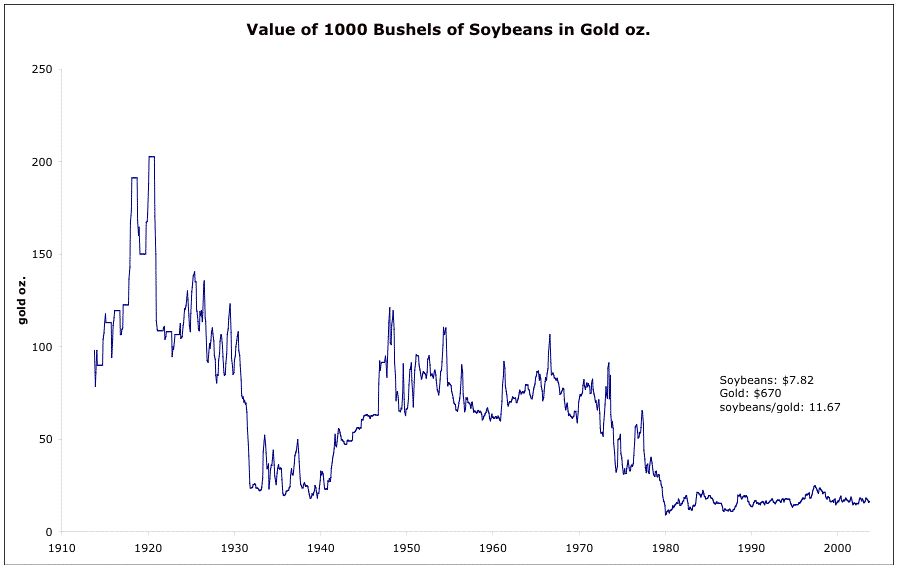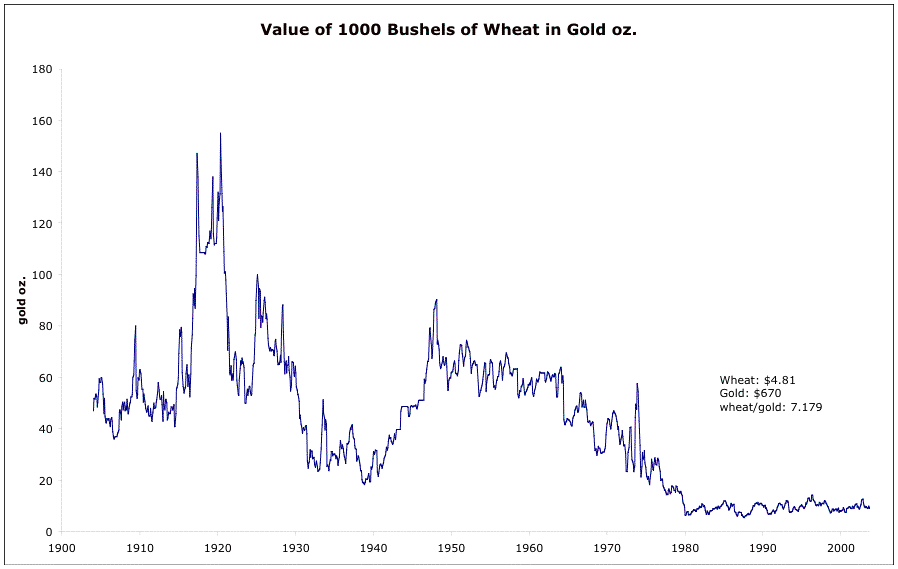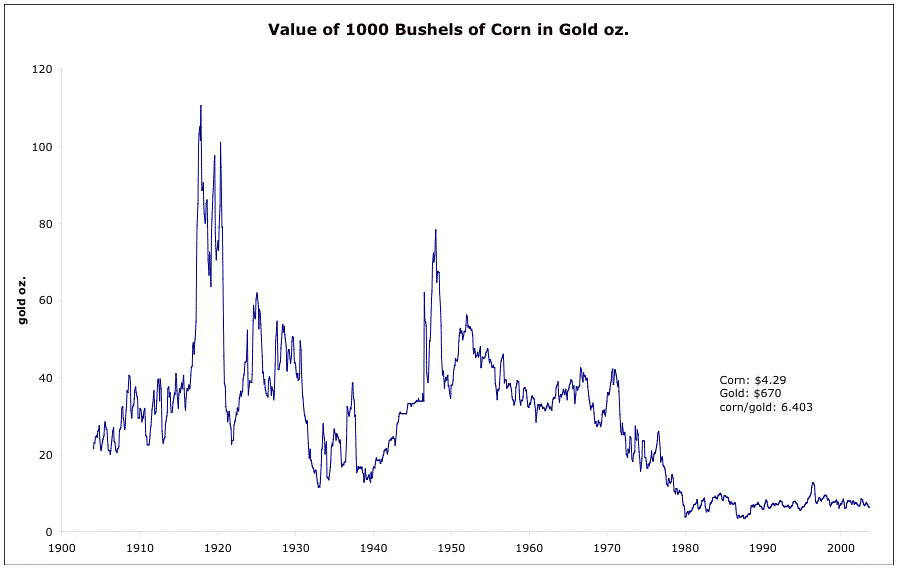The Real Values of Commodities 2: Grains
February 17, 2007
If you thought the metals were cheap, compared to their historical values vs. the eternal measure of value–gold–then take a look at the grains! They are on the order of 1/10th their pre-1930 values. I’m not quite sure what to make of this. The “green revolution” has apparently brought down grain prices, as we see a decline in prices during the 1950s/1960s when metals prices were rising. This can be explained to some degree as a process of diminishing quality (pre-1930s grain is “organic” today) and a mining of natural resources (topsoil, groundwater, etc). In any case, I think it is possible that grains prices could begin a secular climb back toward their 1920s levels, over many decades, as the mining of natural resources falters and population demands continue to increase. However, I am not going to say that process will begin today, since grain prices have been low for a long time. It is worth noting that world stockpiles of grains have been falling for several years, and are now at multi-decade lows on a days-use basis. At the surface, this means that the world has been consuming more grain than it makes. It also means that holders of grain stockpiles have been willing to draw down their inventories at low prices. In short, it looks a little like the uranium market did about seven years ago.
There have already been protests in Mexico over high corn prices. There is some possibility of huge increases in grains prices going forward, on the order of 5x, as gold goes up (the dollar falls) and grains go up in relation to gold.
Once again, these charts only go to the end of 2003, but I have put their most recent prices and gold ratios in text.




